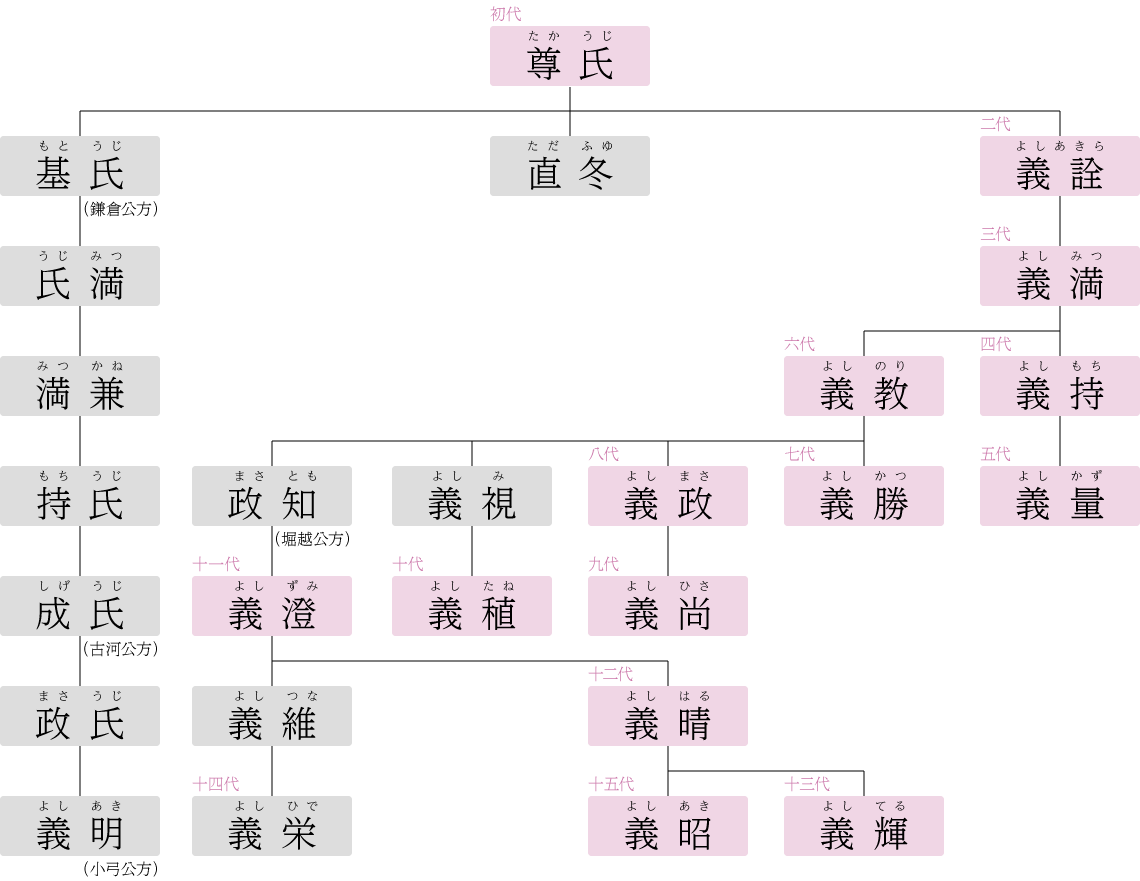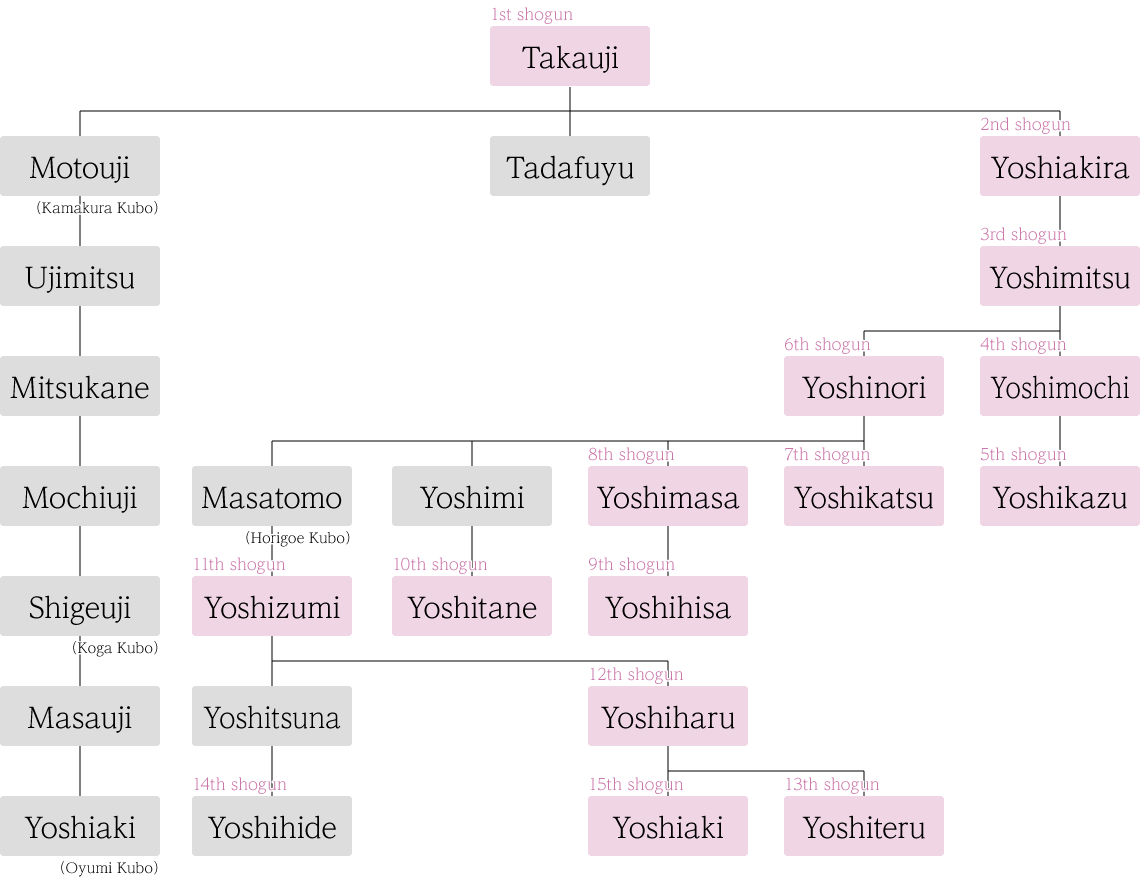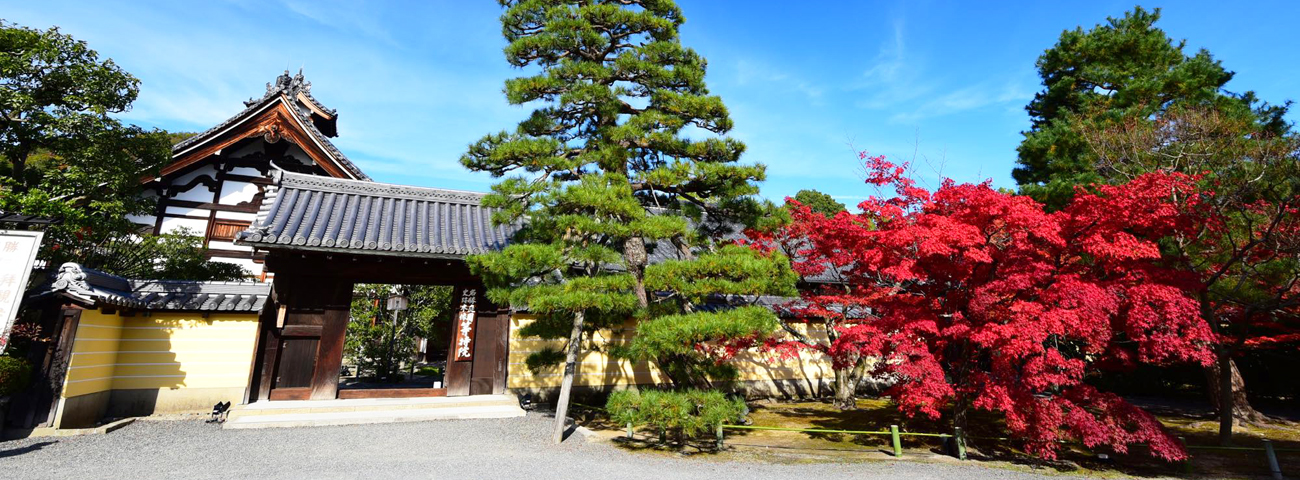
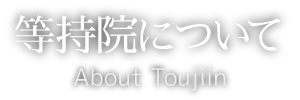


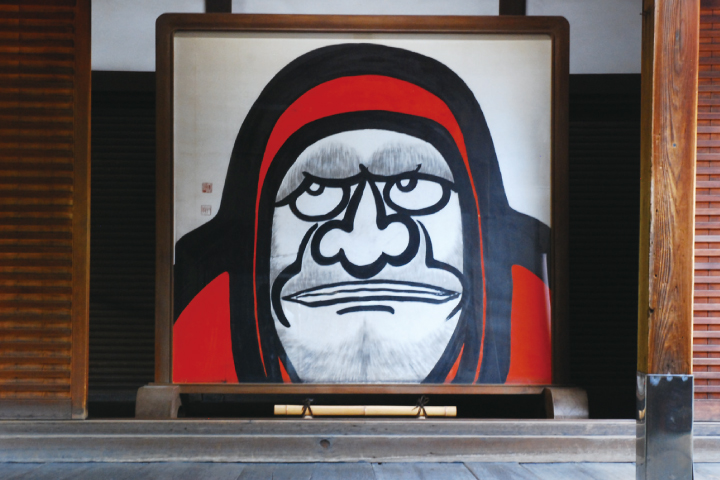
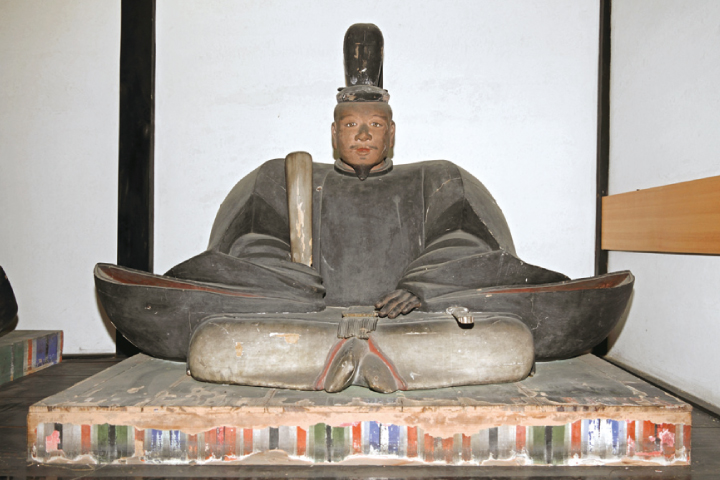
暦応四年(西暦1341年)、足利尊氏が天龍寺開山夢窓国師を開山にお迎えして、衣笠山の南麓に創建したのが、この等持院である。
後に、尊氏・義詮将軍当時の幕府の地にあった等持寺もこちらに移され、足利将軍家歴代の菩提所となった。
応仁の乱などの戦乱や火災に見舞われたが、豊太閤(豊臣秀吉)も、秀頼に建て直させたほど、この寺を重んじられたのである。
その後も移り変わりはあるが、等持院には、足利15代、230余年の歴史を語るだけの貴重な文化財が、今なお充分に保存されている。
Tōji-in was established on the southern slope of Mount Kinugasa by the shogun Ashikaga Takauji (1305-1358) in the year 1341, and serves as the Ashikaga family temple. Zen master Musō Soseki (1275-1351), the founder of the important temple Tenryū-ji, was designated as Tōji-in’s first abbot. Afterwards, the similarly named Tōji-ji (located in the city center and closely associated with the Ashikaga shoguns) merged with Tōji-in. Tōji-in was heavily damaged by fire during the Ōnin War (1467-77) and on several other occasions, but each time was rebuilt by powerful supporters such as Toyotomi Hideyoshi (1537-1598) and Toyotomi Hideyori (1593-1615), testifying to the high regard in which the temple has always been held. Owing to its 230-year association with the Ashikaga shoguns Tōji-in came into possession of many artworks and other cultural properties, which it preserves to the present day.
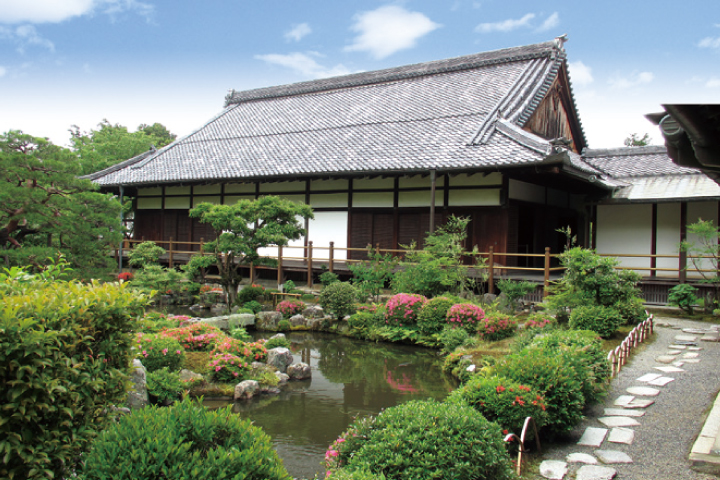
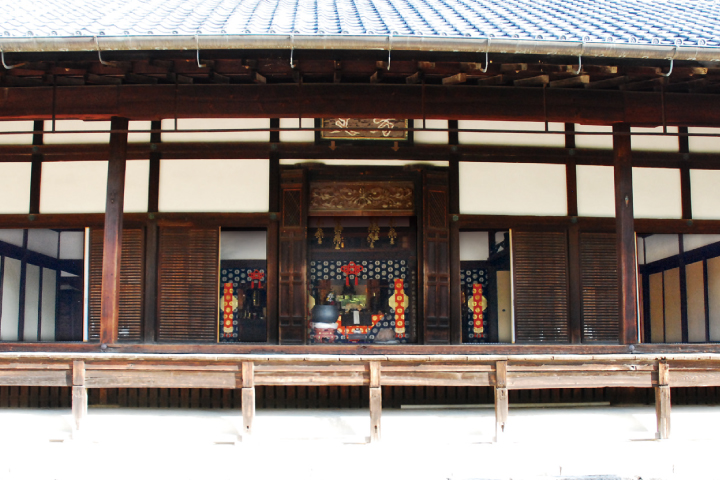
現在の方丈(本堂)は、元和二年(1616年)福島正則が妙心寺塔頭海福院に建立し、文化9年(1812年)等持院に移築された古建築で、南庭をひかえた広縁を静かに歩むと、鶯張りの音がここちよく響く。
方丈の襖絵は狩野興以の作で、明治維新当時一部損壊し、更に映画の撮影所が等持院境内に出来て、方丈がロケに使用されたためにかなり破損したが、今日修復され、年一回の寺宝展で公開されている。
Tōji-in’s Hōjō was originally constructed in 1616 by the feudal lord Fukushima Masanori (1561-1624) on the grounds of Kaifuku-in, a subtemple of the nearby monastery Myōshin-ji. The building was relocated to its present site in 1812. The boards of the broad veranda on the Hōjō’s south side are laid in such a way that when quietly walked upon they produce a distinct squeaking sound. This type of construction, known as uguisu-bari (nightingale floor) was designed in ancient times to signal the presence of intruders. The paintings on the Hōjō’s fusuma (sliding screens) are by the noted artist Kanō Kōi (d., 1636). They were damaged at the time of the Meiji Restoration (1868) and also some years later when the Main Hall was used as a movie location, but they have since been restored and are on display once a year in the autumn, along with other temple treasures.
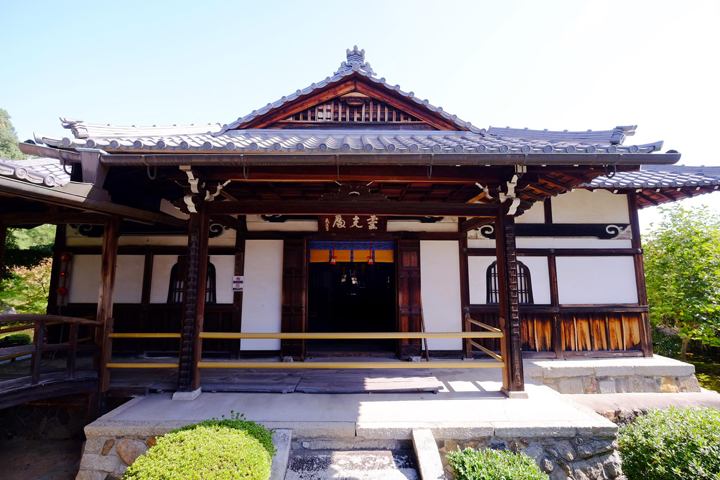
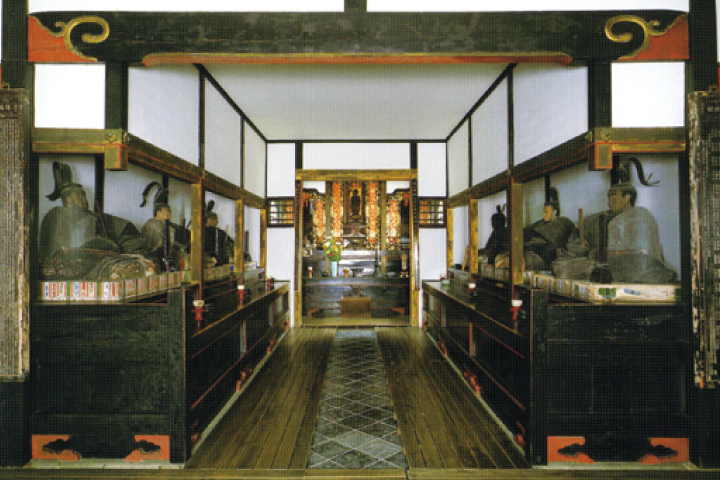
足利尊氏が日々念持仏として信仰していた利運地蔵尊を本尊とし、達磨大師、夢窓国師を左右に、足利歴代の将軍像(5代義量と14代義栄の像を除く)が、徳川家康の像と共に両側に安置している。
家康の像は42才の厄除けの霊験を受けたもので、当初は石清水八幡宮豊蔵坊にあったが、廃仏毀釈後に等持院に移し、本尊と共に利運を願う人たちに信仰されている。
The central image enshrined in the Reikōden is Riun Jizō Bosatsu (Good Fortune Jizō Bodhisattva), which is said to have been Ashikaga Takauji’s favorite object of devotion. The hall also displays images of the Indian monk Bodhidharma, the transmitter of Zen from India to China; Musō Soseki, founder of Tōji-in; the Ashikaga shoguns (excepting the fourth shogun Yoshikazu and the fourteenth shogun Yoshihide); and Tokugawa Ieyasu, founder of the Tokugawa shogunate. Ieyasu’s statue is said to date from his forty-second year, when he underwent a purification ritual at the great Shinto shrine Iwashimizu Hachimangu, located just south of Kyoto. Originally kept at the shrine, the image was relocated to Tōji-in after the suppression of Buddhism that followed the Meiji Restoration. This image, along with the image of Riun Jizō, attracts the devotion of those seeking good fortune.
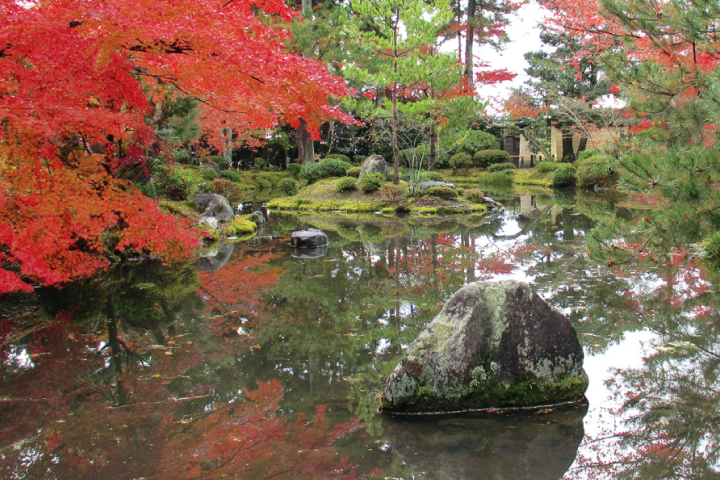
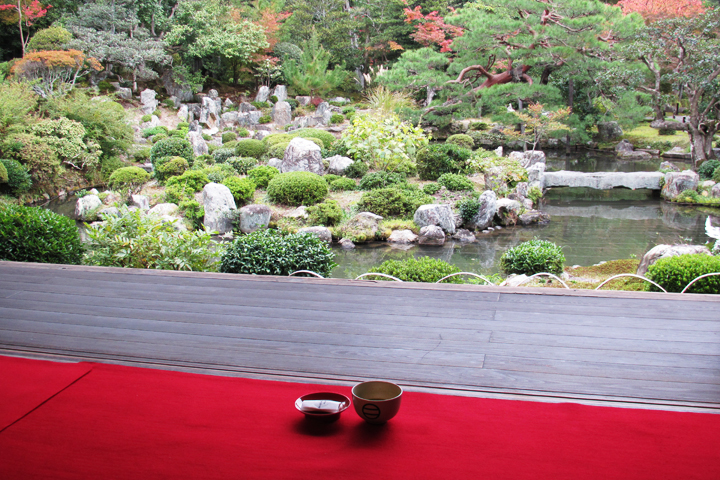
芙蓉池を中心とする庭園は、夢窓国師作とも伝えられる。
この池は蓮の花を模っており、周囲には花木をあしらい草木を配して、石組も変化に富んでいる。
書院では、坐して抹茶を喫しながらこの庭園を眺めることができる。
寒の頃から春先にかけては有楽椿(侘助)、初夏は皐月、7月頃からは梔子の花、初秋は芙蓉の花などが、清漣亭の前方の景に彩りを添える。
方丈の北庭の東側に位置する心字池(草書体の心の字をかたどって作られた池)を主とする庭園の景は幽邃である。
かつてこの池の中島には妙音閣が建っていたが失われ、現在も遺る礎石にその面影を偲ぶことができる。
尊氏百年忌の長禄元年(1457年)に等持院が復興された際には、園内に掬月亭が建っていた。
この庭の景色の中でも、春は桜、夏至の頃に色づく半夏生、秋の紅葉、冬は山茶花などがことの外美しい。
According to one explanation, the garden centering on the Fuyōchi Pond was designed by Zen Master Musō Soseki. The pond, made in the shape of a lotus blossom, is surrounded by a variety of flowering bushes and large, creatively arranged stones. Visitors may view the garden while seated in the Shoin, enjoying a cup of matcha green tea. During the winter and early spring the area in front of the Seirentei teahouse is bright with camellia blossoms, followed by azaleas in early summer, gardenias in midsummer, and rosemallows in early autumn.
The eastern section of the garden just north of the Reikōden is a secluded area centering around a pond known as the Shinji Ike (Mind-Character Pond), since it was designed to resemble the Chinese character for “mind.” On the small island in the pond there once stood a building known as the Myō’on-kaku (Pavilion of Wondrous Sounds); traces of this building can still be seen in the remaining foundation stones. In 1457, when Tōji-in was renovated to commemorate the one-hundredth anniversary of Ashikaga Takauji’s death, the Kikugetsutei was erected in the garden. The garden is particularly picturesque when the cherries are blossoming in the early spring, when the hangeshō come into flower in midsummer, when the autumn colors appear in late fall, and when the sazanka camellias blossom in the winter.
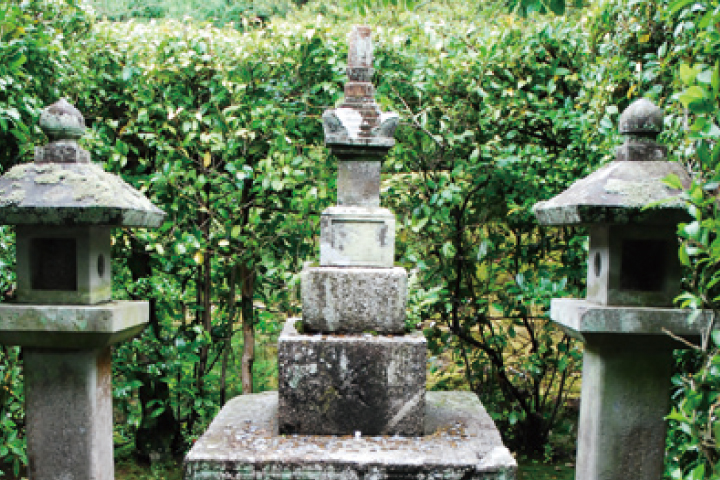
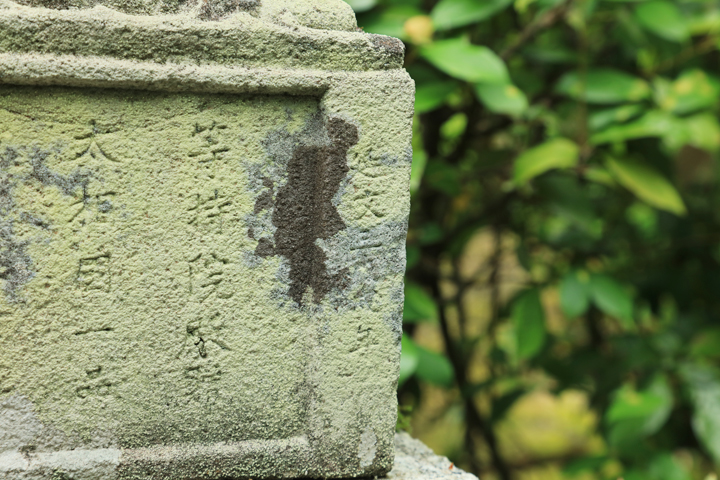
方丈北の中央に尊氏の墓である宝筐印塔がある。
塔の台座は四面に立派な格挟間があり、宝瓶に蓮華を挿した紋様があって、室町時代の形を示している。
台座の正面に延文三年四月の文字がみられる。
North of the Hōjō, between the east and west sections of the garden, stands the Hōkyōintō stone pagoda, marking the grave of Ashikaga Takauji. Built in the Muromachi-period style, the large foundation stone features curved kōzama designs with carvings of lotus flowers. On a higher stone one can see Chinese characters reading “the fourth month of the third year of the Enbun era” (1358).
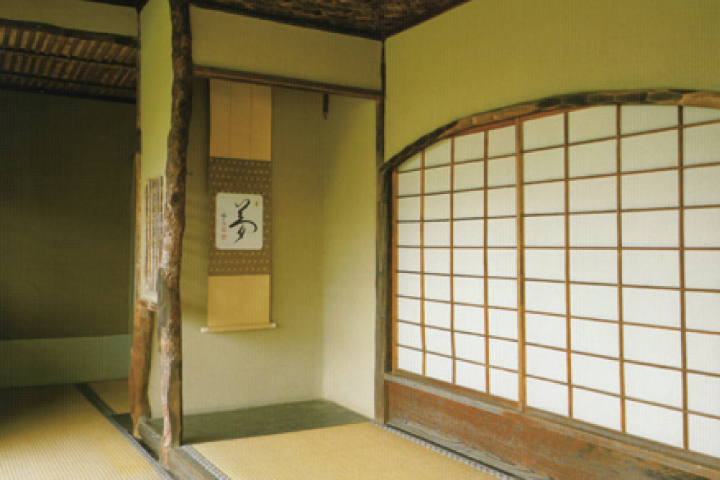
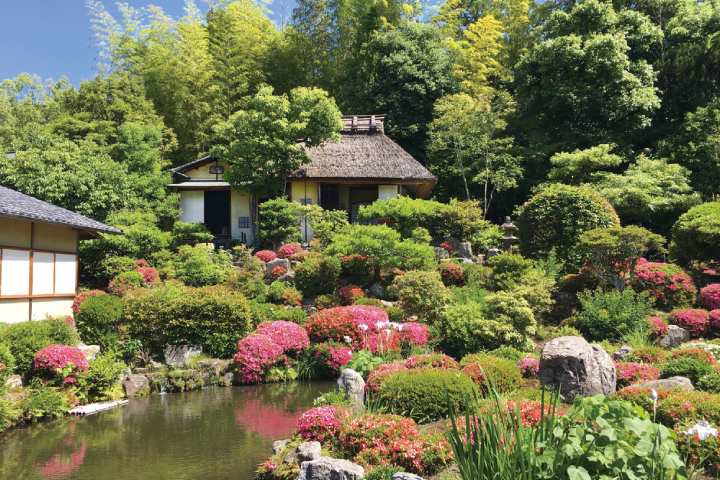
方丈北面の小高い築山に建つ茶室・清漣亭は、成立の年代は明確ではないが、寛政11年(1799)に刊行された「都林泉名勝図会」に記載されており、かつては、その後背に衣笠山を望むことができた。
この二畳台目の茶室は、上段一畳を貴人床とし、眼下には芙蓉池を眺めることができる。
平成29年から令和元年にかけて行われた方丈と霊光殿、清漣亭の改修に伴って、抜本的な修理を行い、西側四畳半が除かれた。
On a low, man-made hill just north of the Main Hall stands the Seirentei (Clear Ripple Hut). Although it is unclear exactly when it was built, it appears in one of the illustrations in the Miyako Rinsen Meishō Zue (Illustrated Guide to the Famous Gardens and Sites of the Capital), published in 1799. In former times, prior to the construction of large buildings to the north of the temple, it was possible to view the slopes of Mount Kinugasa rising behind the Seirentei. The tearoom is built in the nijō-daime style, with two tatami mats for guests and a shorter one for the host. The upper mat, originally reserved for high status guests, affords excellent views of the Fuyōchi garden to the south.
During the major renovation work on Tōji-in’s Hōjō, Reikōden, and Seirentei carried out between 2017 and 2019, the Seirentei underwent extensive restorations that included the removal of a four-and-a-half tatami mat room formerly attached to the west side of the building.
